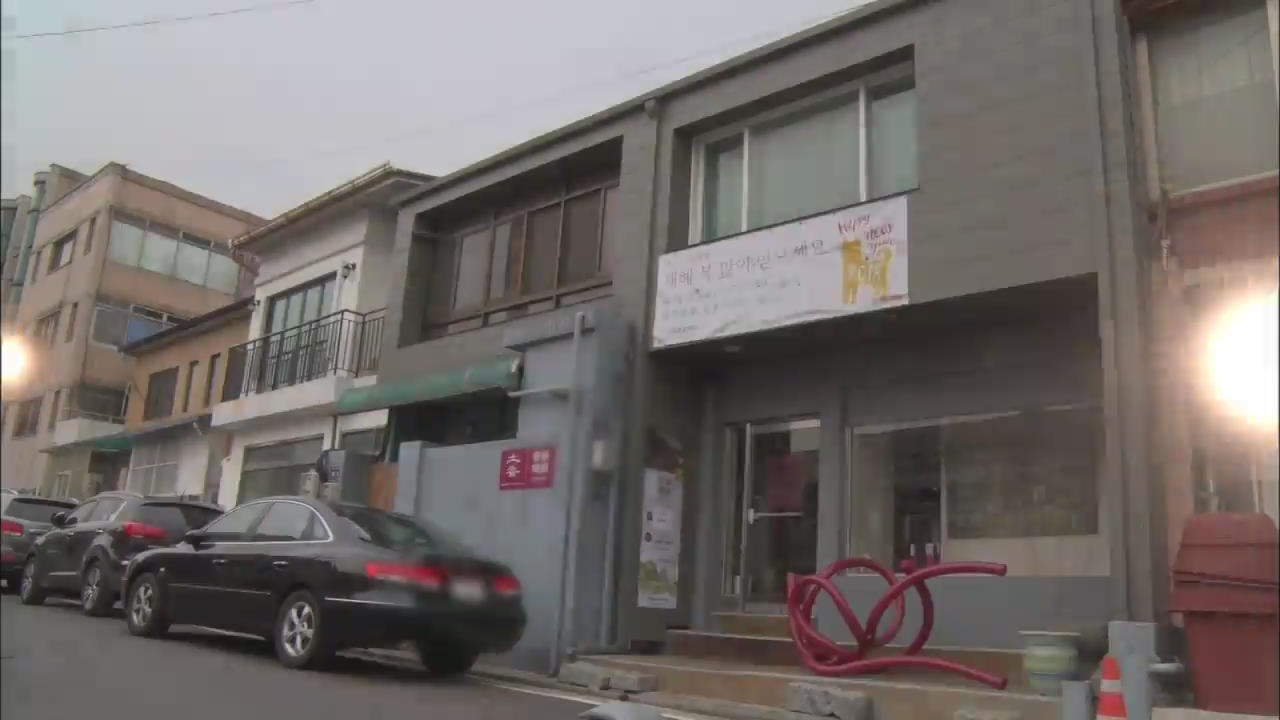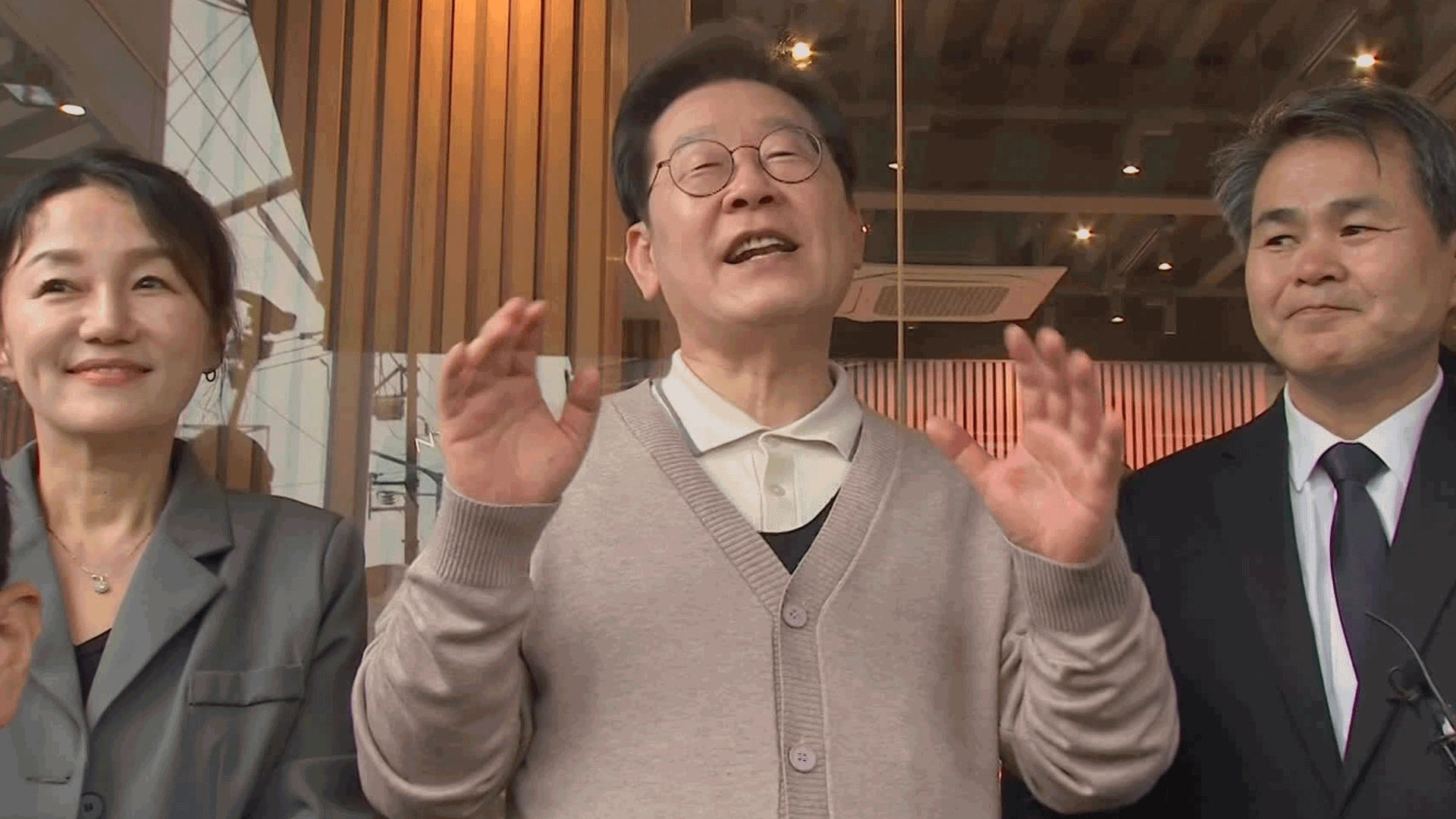Shinpo-Dong Charm
입력 2018.04.13 (15:09)
수정 2018.04.13 (16:42)
읽어주기 기능은 크롬기반의
브라우저에서만 사용하실 수 있습니다.
[Anchor Lead]
Incheon is best known around the world for its gleaming international airport, or the skyscrapers at Songdo International Business District. But locals know that the hip and historic neighborhood of Shinpo-dong is one of the city’s best kept secrets. Once a thriving fashion and culture district, the neighborhood is making a comeback.
[Pkg]
With lines of modern-style buildings, Shinpo-dong in Incheon resembles a movie set. History and culture from the late 19th century are kept alive here.
[Soundbite] Kim Seo-woon(Incheon Culture and Tour Guide) : "Shinpo-dong used to be a busy downtown area, which was called Myeong-dong of Incheon, until the 1990s. It preserves the history and stories of the free-trading port. In particular, foreign culture was first introduced through Jemulpo port. Japanese and Chinese concessions were created here. It vividly testifies to Korea's modern history."
Various cultural spaces are hidden along a some-600-meter-long street near a free-trade port. A gallery was the first to arrive and open here. Its entrance is decorated with vintage-style objects. A closer look reveals that its ceiling, walls and floor are all wooden. It appears to be quite time-honored.
[Soundbite] Ikuko Toda(Gallery Head) : "A newspaper was discovered in the ceiling during construction. It was Kyungseong Ilbo published in 1923. I guess that this house was built a century ago."
A library is hidden inside this gallery. An abandoned space under the roof was converted into an attic library. With its cozy atmosphere, the library is the perfect zone for readers to get into books right away. Now, let's go to fill our empty stomach. A narrow, winding alley leads to a Korean noodle house. The alley used to be a cluster of popular Korean noodle restaurants. However, there are only two restaurants left. Many customers still come to eat hot bowls of noodles they enjoyed in the past. This restaurant has been in business for 36 years. They say that all their troubles disappeared after having this inexpensive, big bowl of noodles. It tastes good, of course. The mild-tasting broth is made with dried pollack, bean sprouts and five vegetables. Toppings of laver and fried crumbs add to the flavor. Customers savor old memories over a bowl of noodles here. With a full stomach, let's resume the tour around the neighborhood. A wooden building with a unique exterior attracts attention. A signboard says that it is a modern cultural relic designated by the Cultural Heritage Administration. This is a cafe converted from a 120-year-old building of a Japanese cargo company. A stairway behind the building leads up to a Japanese-style tatami-floored room. It used to be a residence for Korean port workers some 100 years ago. The vestiges of tragic history are felt through bites of sweets, sips of savory drinks and hearty chats. The sun has set and darkness has fallen. Shinpo-dong used to be a popular culture center of Incheon until the early 1990s. Traces from the era are left around the neighborhood. Shinpo-dong houses one of the oldest jazz bars in Korea. Customers are completely absorbed and immersed in jazz tunes. One-thousand LP records and a 30-year-old turn table take a place at a corner. Let's make a song request. With your loved ones, you can travel back in time to the past on the melody of an oldie but goodie.
[Soundbite] Shin Myung-ok(Incheon Resident) : "It feels as if I went back to the past. I like it because it keeps an unchanged atmosphere."
Shinpo-dong in Incheon is an attractive retro neighborhood with time-honored cultural relics and assets well preserved in this rapidly changing contemporary age. Enjoy the warm days of spring and feel the breaths of time while touring around Shinpo-dong.
Incheon is best known around the world for its gleaming international airport, or the skyscrapers at Songdo International Business District. But locals know that the hip and historic neighborhood of Shinpo-dong is one of the city’s best kept secrets. Once a thriving fashion and culture district, the neighborhood is making a comeback.
[Pkg]
With lines of modern-style buildings, Shinpo-dong in Incheon resembles a movie set. History and culture from the late 19th century are kept alive here.
[Soundbite] Kim Seo-woon(Incheon Culture and Tour Guide) : "Shinpo-dong used to be a busy downtown area, which was called Myeong-dong of Incheon, until the 1990s. It preserves the history and stories of the free-trading port. In particular, foreign culture was first introduced through Jemulpo port. Japanese and Chinese concessions were created here. It vividly testifies to Korea's modern history."
Various cultural spaces are hidden along a some-600-meter-long street near a free-trade port. A gallery was the first to arrive and open here. Its entrance is decorated with vintage-style objects. A closer look reveals that its ceiling, walls and floor are all wooden. It appears to be quite time-honored.
[Soundbite] Ikuko Toda(Gallery Head) : "A newspaper was discovered in the ceiling during construction. It was Kyungseong Ilbo published in 1923. I guess that this house was built a century ago."
A library is hidden inside this gallery. An abandoned space under the roof was converted into an attic library. With its cozy atmosphere, the library is the perfect zone for readers to get into books right away. Now, let's go to fill our empty stomach. A narrow, winding alley leads to a Korean noodle house. The alley used to be a cluster of popular Korean noodle restaurants. However, there are only two restaurants left. Many customers still come to eat hot bowls of noodles they enjoyed in the past. This restaurant has been in business for 36 years. They say that all their troubles disappeared after having this inexpensive, big bowl of noodles. It tastes good, of course. The mild-tasting broth is made with dried pollack, bean sprouts and five vegetables. Toppings of laver and fried crumbs add to the flavor. Customers savor old memories over a bowl of noodles here. With a full stomach, let's resume the tour around the neighborhood. A wooden building with a unique exterior attracts attention. A signboard says that it is a modern cultural relic designated by the Cultural Heritage Administration. This is a cafe converted from a 120-year-old building of a Japanese cargo company. A stairway behind the building leads up to a Japanese-style tatami-floored room. It used to be a residence for Korean port workers some 100 years ago. The vestiges of tragic history are felt through bites of sweets, sips of savory drinks and hearty chats. The sun has set and darkness has fallen. Shinpo-dong used to be a popular culture center of Incheon until the early 1990s. Traces from the era are left around the neighborhood. Shinpo-dong houses one of the oldest jazz bars in Korea. Customers are completely absorbed and immersed in jazz tunes. One-thousand LP records and a 30-year-old turn table take a place at a corner. Let's make a song request. With your loved ones, you can travel back in time to the past on the melody of an oldie but goodie.
[Soundbite] Shin Myung-ok(Incheon Resident) : "It feels as if I went back to the past. I like it because it keeps an unchanged atmosphere."
Shinpo-dong in Incheon is an attractive retro neighborhood with time-honored cultural relics and assets well preserved in this rapidly changing contemporary age. Enjoy the warm days of spring and feel the breaths of time while touring around Shinpo-dong.
■ 제보하기
▷ 카카오톡 : 'KBS제보' 검색, 채널 추가
▷ 전화 : 02-781-1234, 4444
▷ 이메일 : kbs1234@kbs.co.kr
▷ 유튜브, 네이버, 카카오에서도 KBS뉴스를 구독해주세요!
- Shinpo-Dong Charm
-
- 입력 2018-04-13 15:10:11
- 수정2018-04-13 16:42:29

[Anchor Lead]
Incheon is best known around the world for its gleaming international airport, or the skyscrapers at Songdo International Business District. But locals know that the hip and historic neighborhood of Shinpo-dong is one of the city’s best kept secrets. Once a thriving fashion and culture district, the neighborhood is making a comeback.
[Pkg]
With lines of modern-style buildings, Shinpo-dong in Incheon resembles a movie set. History and culture from the late 19th century are kept alive here.
[Soundbite] Kim Seo-woon(Incheon Culture and Tour Guide) : "Shinpo-dong used to be a busy downtown area, which was called Myeong-dong of Incheon, until the 1990s. It preserves the history and stories of the free-trading port. In particular, foreign culture was first introduced through Jemulpo port. Japanese and Chinese concessions were created here. It vividly testifies to Korea's modern history."
Various cultural spaces are hidden along a some-600-meter-long street near a free-trade port. A gallery was the first to arrive and open here. Its entrance is decorated with vintage-style objects. A closer look reveals that its ceiling, walls and floor are all wooden. It appears to be quite time-honored.
[Soundbite] Ikuko Toda(Gallery Head) : "A newspaper was discovered in the ceiling during construction. It was Kyungseong Ilbo published in 1923. I guess that this house was built a century ago."
A library is hidden inside this gallery. An abandoned space under the roof was converted into an attic library. With its cozy atmosphere, the library is the perfect zone for readers to get into books right away. Now, let's go to fill our empty stomach. A narrow, winding alley leads to a Korean noodle house. The alley used to be a cluster of popular Korean noodle restaurants. However, there are only two restaurants left. Many customers still come to eat hot bowls of noodles they enjoyed in the past. This restaurant has been in business for 36 years. They say that all their troubles disappeared after having this inexpensive, big bowl of noodles. It tastes good, of course. The mild-tasting broth is made with dried pollack, bean sprouts and five vegetables. Toppings of laver and fried crumbs add to the flavor. Customers savor old memories over a bowl of noodles here. With a full stomach, let's resume the tour around the neighborhood. A wooden building with a unique exterior attracts attention. A signboard says that it is a modern cultural relic designated by the Cultural Heritage Administration. This is a cafe converted from a 120-year-old building of a Japanese cargo company. A stairway behind the building leads up to a Japanese-style tatami-floored room. It used to be a residence for Korean port workers some 100 years ago. The vestiges of tragic history are felt through bites of sweets, sips of savory drinks and hearty chats. The sun has set and darkness has fallen. Shinpo-dong used to be a popular culture center of Incheon until the early 1990s. Traces from the era are left around the neighborhood. Shinpo-dong houses one of the oldest jazz bars in Korea. Customers are completely absorbed and immersed in jazz tunes. One-thousand LP records and a 30-year-old turn table take a place at a corner. Let's make a song request. With your loved ones, you can travel back in time to the past on the melody of an oldie but goodie.
[Soundbite] Shin Myung-ok(Incheon Resident) : "It feels as if I went back to the past. I like it because it keeps an unchanged atmosphere."
Shinpo-dong in Incheon is an attractive retro neighborhood with time-honored cultural relics and assets well preserved in this rapidly changing contemporary age. Enjoy the warm days of spring and feel the breaths of time while touring around Shinpo-dong.
Incheon is best known around the world for its gleaming international airport, or the skyscrapers at Songdo International Business District. But locals know that the hip and historic neighborhood of Shinpo-dong is one of the city’s best kept secrets. Once a thriving fashion and culture district, the neighborhood is making a comeback.
[Pkg]
With lines of modern-style buildings, Shinpo-dong in Incheon resembles a movie set. History and culture from the late 19th century are kept alive here.
[Soundbite] Kim Seo-woon(Incheon Culture and Tour Guide) : "Shinpo-dong used to be a busy downtown area, which was called Myeong-dong of Incheon, until the 1990s. It preserves the history and stories of the free-trading port. In particular, foreign culture was first introduced through Jemulpo port. Japanese and Chinese concessions were created here. It vividly testifies to Korea's modern history."
Various cultural spaces are hidden along a some-600-meter-long street near a free-trade port. A gallery was the first to arrive and open here. Its entrance is decorated with vintage-style objects. A closer look reveals that its ceiling, walls and floor are all wooden. It appears to be quite time-honored.
[Soundbite] Ikuko Toda(Gallery Head) : "A newspaper was discovered in the ceiling during construction. It was Kyungseong Ilbo published in 1923. I guess that this house was built a century ago."
A library is hidden inside this gallery. An abandoned space under the roof was converted into an attic library. With its cozy atmosphere, the library is the perfect zone for readers to get into books right away. Now, let's go to fill our empty stomach. A narrow, winding alley leads to a Korean noodle house. The alley used to be a cluster of popular Korean noodle restaurants. However, there are only two restaurants left. Many customers still come to eat hot bowls of noodles they enjoyed in the past. This restaurant has been in business for 36 years. They say that all their troubles disappeared after having this inexpensive, big bowl of noodles. It tastes good, of course. The mild-tasting broth is made with dried pollack, bean sprouts and five vegetables. Toppings of laver and fried crumbs add to the flavor. Customers savor old memories over a bowl of noodles here. With a full stomach, let's resume the tour around the neighborhood. A wooden building with a unique exterior attracts attention. A signboard says that it is a modern cultural relic designated by the Cultural Heritage Administration. This is a cafe converted from a 120-year-old building of a Japanese cargo company. A stairway behind the building leads up to a Japanese-style tatami-floored room. It used to be a residence for Korean port workers some 100 years ago. The vestiges of tragic history are felt through bites of sweets, sips of savory drinks and hearty chats. The sun has set and darkness has fallen. Shinpo-dong used to be a popular culture center of Incheon until the early 1990s. Traces from the era are left around the neighborhood. Shinpo-dong houses one of the oldest jazz bars in Korea. Customers are completely absorbed and immersed in jazz tunes. One-thousand LP records and a 30-year-old turn table take a place at a corner. Let's make a song request. With your loved ones, you can travel back in time to the past on the melody of an oldie but goodie.
[Soundbite] Shin Myung-ok(Incheon Resident) : "It feels as if I went back to the past. I like it because it keeps an unchanged atmosphere."
Shinpo-dong in Incheon is an attractive retro neighborhood with time-honored cultural relics and assets well preserved in this rapidly changing contemporary age. Enjoy the warm days of spring and feel the breaths of time while touring around Shinpo-dong.
이 기사가 좋으셨다면
-
좋아요
0
-
응원해요
0
-
후속 원해요
0















![[단독] “1년 새 1㎝” 철도공사에 땅 꺼지는 무안공항](/data/news/2025/05/09/20250509_TpbjP4.png)

이 기사에 대한 의견을 남겨주세요.